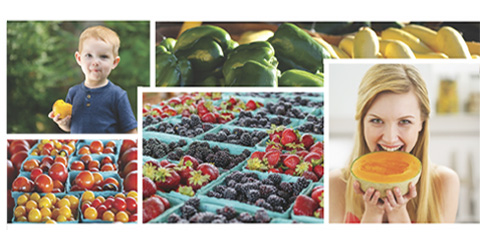Retailers and foodservice continue mainlining local, affecting what and how much growers plant. Recent changes have included more emphasis on two longtime favorites: melons (including beloved watermelon varieties) and tomatoes.
Both Boozer and Best comment on the demand for melons: “Our South Carolina growers seem to be producing more watermelon each year,” notes Boozer. Best, with the Raleigh Market, characterizes the local craze as a boon for growers and expects higher volume extending into the fall: “specialties like Sprite melons are more and more popular.”
In terms of organics, like most everywhere, sales and demand are up, stretching across both Carolinas according to Jonah Critcher, in sales at Critcher Brothers, Inc. in Deep Gap, NC. “We’re looking at growing more organic cabbage,” he notes, for both “the local and organics markets.”
Performance Produce’s Laws agrees. “We’re seeing an uptick in organics,” he affirms. Both also comment on the convenience trend, along with portion size. “People who used to take 10-pound onion packs now want 3 pounds,” points out Laws. “Meal kits and individual packaging keep growing; in general, the trend continues toward individual servings.”
Critcher cites the popularity of steamable potato packs, with consumers willing to pay extra for these quick and easy side dishes, even if an entire bag of potatoes may be close in price.
Maintaining Balance
Weather was a good-sized challenge for Carolina produce. This year, parts of North Carolina dealt with rain and mudslides, while last year South Carolina’s historic freeze took out most of its peach crop. “Last year was a pretty rough year starting out,” admits Boozer.
Not all areas are as hard hit by the weather or the resulting losses. Upstate South Carolina, particularly the Green-ville and Spartanburg areas, “seem to have weathered economic storms a little better than other parts of the state,” observes Taylor.
And despite high demand, there’s plenty of competition. Growers work hard to get their melons to market before the July 4 holiday, following supply from Florida and Georgia. But for other crops, seasons can overlap. “North Carolina strawberries have to compete with the Florida crop, which is usually much cheaper,” notes Best at the Raleigh, NC market.
Other hurdles in getting fruits and vegetables to market are related to food safety and transportation. “Changes in how retailers receive product have certainly hurt our wholesalers,” contends Best. “But wholesalers have adapted; they’re serving more foodservice and we also see a lot more activity in fresh-cut products.”



